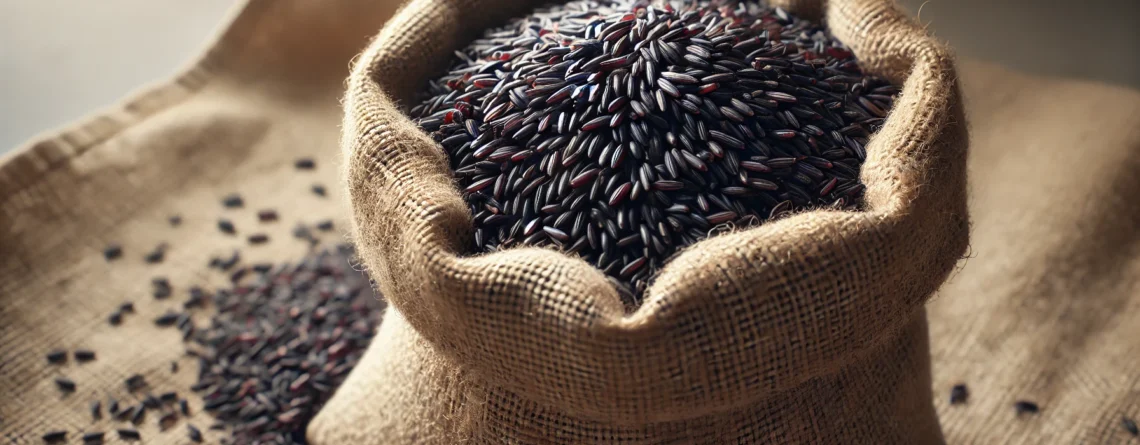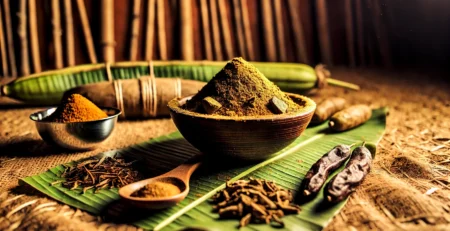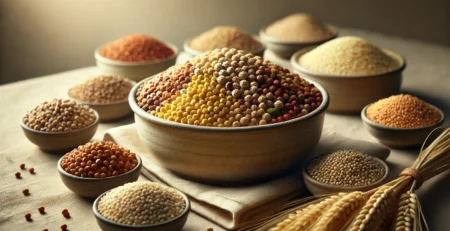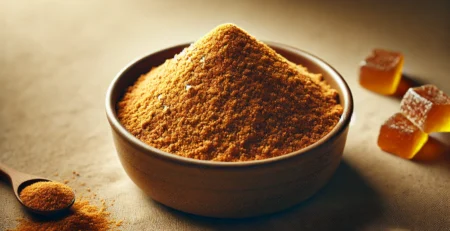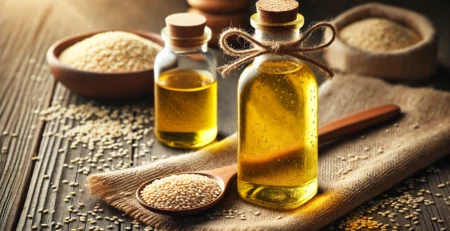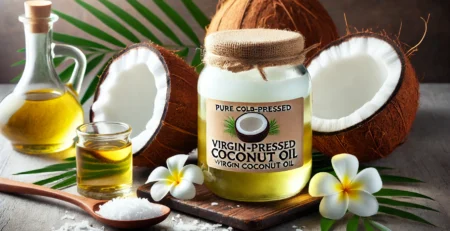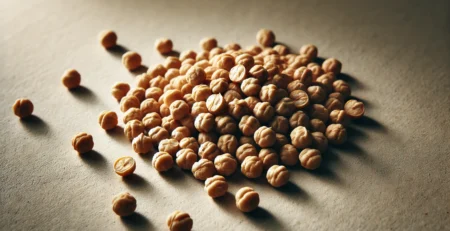Karuppu Kavuni Rice Benefits: The Ancient Grain with Modern Health Perks
Karuppu Kavuni Rice Benefits: Karuppu Kavuni rice, also known as Black Rice or Emperor’s Rice, is a traditional variety of rice that has been revered in South India for centuries. This unique rice variety is known for its rich, dark purple hue and its impressive array of health benefits. In recent years, it has gained popularity among health-conscious consumers worldwide, who are drawn to its high nutritional content and potential health benefits. In this comprehensive guide, we’ll explore the history, nutritional profile, and numerous karuppu kavuni rice benefits, while also providing tips on how to incorporate this ancient grain into your modern diet.
1. What is Karuppu Kavuni Rice?
1.1 The Origins of Karuppu Kavuni Rice
Karuppu Kavuni rice is an ancient variety of rice that originates from Tamil Nadu, India. It is a type of black rice, which is sometimes referred to as “forbidden rice” due to its historical association with royalty. This rice has been cultivated for centuries, with its origins tracing back to the Chola dynasty, where it was considered a luxury food reserved for the royal family. The deep black color of the rice is attributed to its high anthocyanin content, which not only gives it a striking appearance but also contributes to its numerous health benefits.
1.2 The Cultural Significance of Karuppu Kavuni Rice
In Tamil culture, Karuppu Kavuni rice holds significant cultural importance. It has been used in various traditional ceremonies and rituals, often symbolizing prosperity and good health. The rice is also an integral part of the traditional diet in Tamil Nadu, where it is used in a variety of dishes ranging from sweet puddings to savory dishes.
1.3 The Rise in Popularity of Karuppu Kavuni Rice
In recent years, Karuppu Kavuni rice has gained recognition beyond South India, as more people become aware of its health benefits. As a result, it is now commonly available in organic stores and health food shops around the world. The growing demand for nutrient-dense, whole grains has contributed to its resurgence, making it a popular choice among those looking to enhance their diet with natural, wholesome foods.
2. Nutritional Profile of Karuppu Kavuni Rice
2.1 Macronutrients
Karuppu Kavuni rice is a rich source of complex carbohydrates, which provide sustained energy release throughout the day. Unlike refined white rice, this ancient grain retains its bran and germ, making it a high-fiber food that supports digestive health and helps maintain stable blood sugar levels. Each serving of Karuppu Kavuni rice also contains a moderate amount of plant-based protein, making it an excellent choice for vegetarians and vegans.
2.2 Antioxidants: The Power of Anthocyanins
One of the most notable features of Karuppu Kavuni rice is its high antioxidant content, particularly anthocyanins. Anthocyanins are powerful antioxidants that help protect the body from oxidative stress, reduce inflammation, and lower the risk of chronic diseases such as heart disease and cancer. The dark color of the rice is a clear indicator of its anthocyanin richness, which surpasses that of other rice varieties, including brown and white rice.
2.3 Essential Vitamins and Minerals
Karuppu Kavuni rice is packed with essential vitamins and minerals, including:
- Vitamin E: Known for its skin-protecting and anti-aging properties.
- Iron: Vital for the production of hemoglobin and the prevention of anemia.
- Magnesium: Supports muscle function, nerve transmission, and bone health.
- Zinc: Important for immune function, wound healing, and protein synthesis.
These nutrients contribute to the overall health benefits of Karuppu Kavuni rice, making it a highly nutritious addition to any diet.
3. Karuppu Kavuni Rice Benefits
3.1 Supports Digestive Health
One of the key karuppu kavuni rice benefits is its ability to support digestive health. The high fiber content in this rice promotes regular bowel movements and helps prevent constipation. Additionally, the fiber acts as a prebiotic, supporting the growth of healthy gut bacteria, which is essential for overall digestive health. By including Karuppu Kavuni rice in your diet, you can improve your digestion and enhance nutrient absorption.
3.2 Enhances Cardiovascular Health
Karuppu Kavuni rice is beneficial for heart health, thanks to its rich antioxidant content. Anthocyanins, the antioxidants responsible for the rice’s dark color, help reduce inflammation in the arteries and lower LDL (bad) cholesterol levels. This, in turn, helps prevent the buildup of plaque in the arteries, reducing the risk of heart disease. Additionally, the magnesium in Karuppu Kavuni rice helps regulate blood pressure, further supporting cardiovascular health.
3.3 Promotes Weight Management
If you’re looking to manage your weight, Karuppu Kavuni rice can be a valuable addition to your diet. The high fiber content in this rice helps increase feelings of fullness, reducing overall calorie intake and preventing overeating. Moreover, the complex carbohydrates in Karuppu Kavuni rice provide sustained energy, helping you stay active and energized throughout the day. By incorporating this rice into your meals, you can support your weight management goals while enjoying a nutritious and satisfying food.
3.4 Boosts Immune Function
The immune-boosting properties of Karuppu Kavuni rice are another significant benefit. This rice is rich in essential nutrients like zinc, which plays a crucial role in supporting immune function. Zinc is necessary for the proper functioning of immune cells and helps the body fight off infections. The antioxidants in Karuppu Kavuni rice also protect the body from free radical damage, reducing the risk of chronic illnesses and supporting overall immune health.
3.5 Regulates Blood Sugar Levels
For individuals with diabetes or those looking to manage their blood sugar levels, Karuppu Kavuni rice offers a low glycemic index, meaning it causes a slower, more gradual rise in blood sugar levels. This makes it an ideal food for those seeking to prevent blood sugar spikes and maintain stable energy levels. The fiber in Karuppu Kavuni rice also helps stabilize blood sugar levels, further reducing the risk of type 2 diabetes.
3.6 Benefits for Skin and Hair
Karuppu Kavuni rice benefits extend beyond internal health; they also contribute to healthy skin and hair. The high levels of vitamin E and anthocyanins in this rice help protect the skin from damage caused by UV rays and environmental pollutants. These nutrients also promote skin elasticity and reduce the appearance of fine lines and wrinkles. Regular consumption of Karuppu Kavuni rice can lead to healthier, more radiant skin and stronger, shinier hair.
4. How to Incorporate Karuppu Kavuni Rice into Your Diet
4.1 Cooking Karuppu Kavuni Rice
Cooking Karuppu Kavuni rice is simple, but it requires a bit more time than cooking white rice due to its dense texture. Here’s how you can prepare it:
- Rinse the Rice: Start by rinsing the rice under cold water to remove any impurities.
- Soak the Rice: For best results, soak the rice for at least 30 minutes before cooking. This helps soften the grains and reduces cooking time.
- Cook the Rice: Use a ratio of 1:2.5 (1 cup of rice to 2.5 cups of water). Bring the water to a boil, then reduce the heat to low, cover, and simmer for about 45 minutes, or until the rice is tender and the water is absorbed.
- Fluff and Serve: Once cooked, fluff the rice with a fork and serve as desired.
4.2 Traditional Dishes Using Karuppu Kavuni Rice
Karuppu Kavuni rice has been a staple in South Indian cuisine for centuries, and it is used in a variety of traditional dishes, including:
- Karuppu Kavuni Rice Porridge: A nutritious breakfast option, often sweetened with jaggery and flavored with coconut and cardamom.
- Black Rice Payasam: A traditional dessert made with Karuppu Kavuni rice, milk, sugar, and garnished with nuts and raisins.
- Karuppu Kavuni Idli: A variation of the popular South Indian steamed rice cakes, made using Karuppu Kavuni rice for added flavor and nutrition.
4.3 Modern Recipes Incorporating Karuppu Kavuni Rice
In addition to traditional dishes, Karuppu Kavuni rice can be used in a variety of modern recipes, such as:
- Black Rice Salad: Toss cooked Karuppu Kavuni rice with fresh vegetables, herbs, and a light vinaigrette for a nutritious and flavorful salad.
- Black Rice Sushi: Use Karuppu Kavuni rice in place of white rice to make a healthy and visually striking sushi roll.
- Black Rice Bowl: Create a nutrient-packed bowl by combining Karuppu Kavuni rice with roasted vegetables, avocado, and a protein of your choice.
By experimenting with different recipes, you can enjoy the many karuppu kavuni rice benefits while adding variety to your meals.
5. Where to Buy Karuppu Kavuni Rice
5.1 Online Retailers
With the growing popularity of Karuppu Kavuni rice, it is now widely available through online retailers. Websites specializing in organic and natural foods often carry this rice, making it easy to order and have it delivered to your doorstep. Be sure to read reviews and check for certifications to ensure you’re purchasing high-quality, authentic Karuppu Kavuni rice.
5.2 Organic and Specialty Stores
5. Where to Buy Karuppu Kavuni Rice
5.1 Online Retailers
With the rising popularity of karuppu kavuni rice, many online retailers now offer this unique grain. Websites dedicated to organic and natural foods frequently carry karuppu kavuni rice, making it easy for consumers to access this superfood regardless of location. When purchasing online, it’s essential to verify the authenticity and quality of the rice. Look for trusted sellers who provide detailed information about their sourcing and cultivation practices, as well as positive customer reviews.
5.2 Organic and Specialty Stores
If you prefer purchasing karuppu kavuni rice in person, check out local organic and specialty food stores. These stores often stock a variety of traditional grains, including karuppu kavuni rice. Shopping locally not only allows you to support small businesses but also gives you the opportunity to inspect the product before buying. Ask store staff about the sourcing and quality of the rice, ensuring you’re getting the best possible product.
5.3 Farmers Markets
Another excellent option for purchasing karuppu kavuni rice is visiting farmers markets. Many small-scale farmers grow traditional rice varieties like karuppu kavuni and sell them directly to consumers. Buying from a farmers market allows you to connect with the growers and learn more about how the rice is cultivated. Plus, you can often find freshly harvested rice, which ensures maximum flavor and nutritional benefits.
5.4 Tips for Purchasing Quality Karuppu Kavuni Rice
When buying karuppu kavuni rice, whether online or in-store, keep these tips in mind to ensure you’re getting the best quality product:
- Check the Label: Look for organic certification and details about the rice’s origin. High-quality karuppu kavuni rice is typically grown using traditional methods without the use of synthetic pesticides or fertilizers.
- Inspect the Grain: The rice should have a deep, consistent black-purple color with no signs of discoloration or damage. The grains should be whole and unbroken.
- Consider the Packaging: Choose rice that is packaged in airtight containers or bags to preserve freshness and prevent contamination.
- Ask Questions: Don’t hesitate to ask the seller or retailer about the rice’s sourcing, farming practices, and any additional information that can assure you of its quality.
6. Frequently Asked Questions (FAQs) About Karuppu Kavuni Rice Benefits
6.1 How to Cook Karuppu Kavuni Rice?
Cooking karuppu kavuni rice is straightforward, but it requires a bit more time than cooking white rice due to its dense texture. Start by rinsing the rice under cold water to remove any impurities. For best results, soak the rice for 30 minutes to an hour before cooking. Use a ratio of 1 cup of rice to 2.5 cups of water. Bring the water to a boil, then reduce the heat to low, cover, and simmer for 45 minutes to an hour, or until the rice is tender and the water is absorbed. Fluff the rice with a fork and serve.
6.2 Is Karuppu Kavuni Rice Gluten-Free?
Yes, karuppu kavuni rice is naturally gluten-free, making it a safe choice for individuals with celiac disease or gluten sensitivity. This ancient grain is an excellent alternative to gluten-containing grains like wheat, barley, and rye, providing a nutrient-dense option for those following a gluten-free diet.
6.3 Can Diabetics Eat Karuppu Kavuni Rice?
Karuppu kavuni rice is an excellent option for individuals with diabetes due to its low glycemic index. Unlike white rice, which can cause rapid spikes in blood sugar levels, karuppu kavuni rice is digested more slowly, leading to a gradual release of glucose into the bloodstream. This helps maintain stable blood sugar levels, making it a diabetes-friendly grain.
6.4 How Does Karuppu Kavuni Rice Taste?
Karuppu kavuni rice has a unique flavor profile that sets it apart from other rice varieties. It has a rich, nutty flavor with a slightly sweet undertone. When cooked, the rice has a chewy texture that adds substance to any dish. Its distinct taste makes it a versatile ingredient that pairs well with both sweet and savory flavors.
6.5 What Are the Main Karuppu Kavuni Rice Benefits?
The primary karuppu kavuni rice benefits include its high antioxidant content, particularly anthocyanins, which help protect against chronic diseases and support overall health. The rice is also rich in dietary fiber, promoting digestive health and aiding in weight management. Additionally, it contains essential vitamins and minerals, such as iron, magnesium, and zinc, which contribute to immune function, cardiovascular health, and overall well-being.
7. Karuppu Kavuni Rice in Traditional Medicine and Modern Research
7.1 Traditional Uses of Karuppu Kavuni Rice
In traditional South Indian medicine, karuppu kavuni rice has been used for its healing properties for centuries. It is often prescribed to individuals recovering from illness or surgery due to its high nutritional content and ability to promote recovery. The rice is also used in Ayurvedic practices to balance the body’s doshas and promote overall health.
7.2 Modern Research on Karuppu Kavuni Rice Benefits
Modern research has begun to validate many of the traditional beliefs surrounding karuppu kavuni rice benefits. Studies have shown that the high levels of anthocyanins in this rice have potent anti-inflammatory and antioxidant properties, which can help protect against heart disease, cancer, and other chronic conditions. Research has also demonstrated the rice’s ability to regulate blood sugar levels, making it a valuable food for individuals with diabetes.
8. Conclusion: Why You Should Include Karuppu Kavuni Rice in Your Diet
Karuppu kavuni rice is more than just a staple grain in South Indian cuisine; it is a nutritional powerhouse that offers numerous health benefits. From supporting digestive health and promoting cardiovascular health to regulating blood sugar levels and boosting immune function, the benefits of this ancient grain are truly impressive. Its rich antioxidant content, particularly anthocyanins, sets it apart from other rice varieties, making it a superior choice for those looking to enhance their diet with nutrient-dense foods.
Whether you’re cooking traditional South Indian dishes or experimenting with modern recipes, karuppu kavuni rice is a versatile ingredient that can add both flavor and nutrition to your meals. As more people become aware of the karuppu kavuni rice benefits, its popularity continues to grow, making it an essential addition to any health-conscious kitchen.
Incorporating karuppu kavuni rice into your diet is a simple way to enjoy the benefits of this ancient grain while also supporting overall health and well-being. Whether you purchase it online, from an organic store, or at a local farmers market, make sure to choose high-quality rice to ensure you’re getting the best possible product. With its rich history, cultural significance, and numerous health benefits, karuppu kavuni rice is truly a superfood worth celebrating.
Key Takeaway: Karuppu kavuni rice benefits are vast and varied, making this ancient grain a valuable addition to any diet. Its high antioxidant content, rich nutrient profile, and unique flavor make it a must-try for anyone looking to improve their health through natural, wholesome foods. Whether you’re new to karuppu kavuni rice or already familiar with its benefits, incorporating it into your meals can help you enjoy better health and a more vibrant lifestyle.


